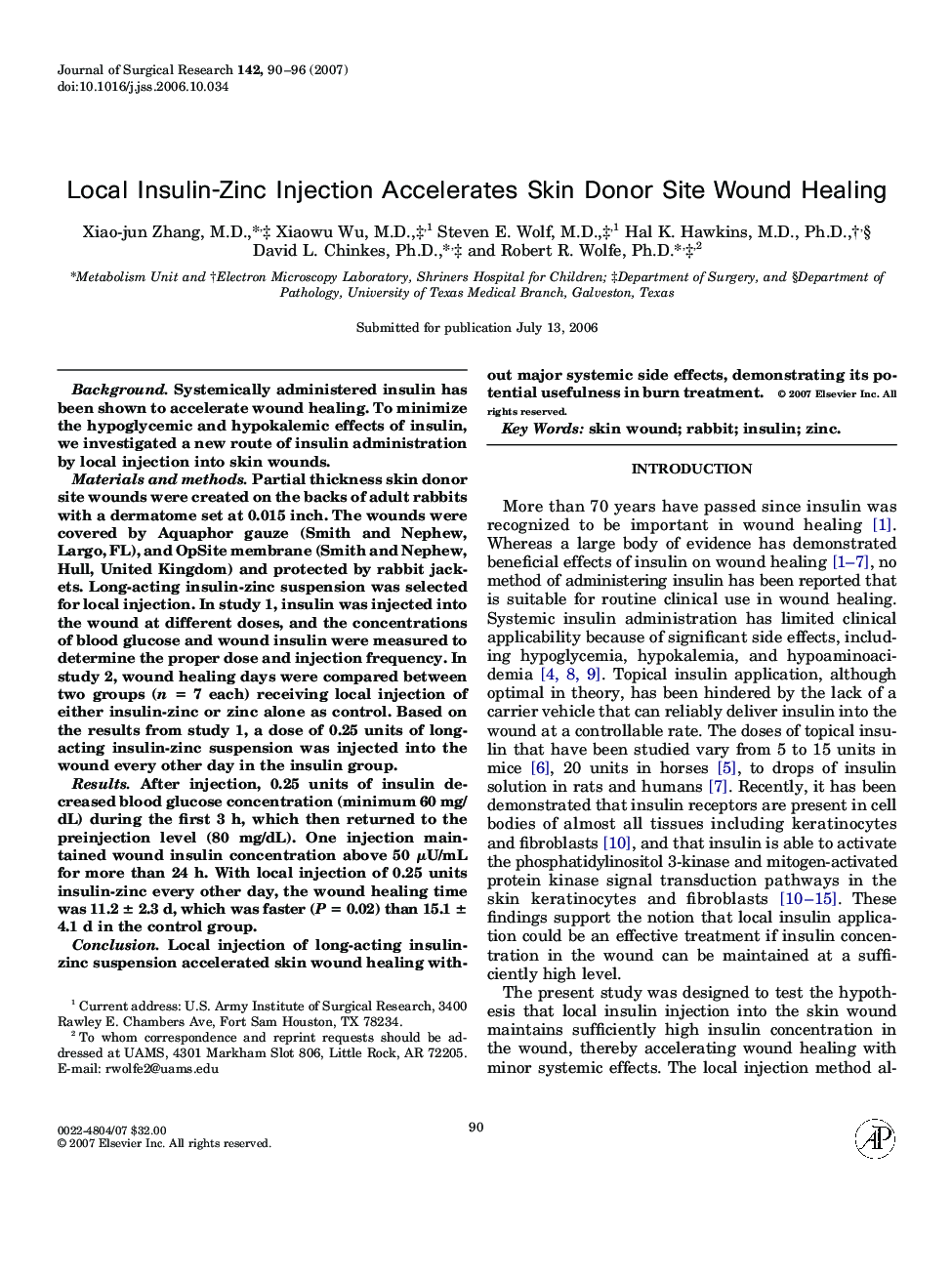| Article ID | Journal | Published Year | Pages | File Type |
|---|---|---|---|---|
| 4304474 | Journal of Surgical Research | 2007 | 7 Pages |
BackgroundSystemically administered insulin has been shown to accelerate wound healing. To minimize the hypoglycemic and hypokalemic effects of insulin, we investigated a new route of insulin administration by local injection into skin wounds.Materials and methodsPartial thickness skin donor site wounds were created on the backs of adult rabbits with a dermatome set at 0.015 inch. The wounds were covered by Aquaphor gauze (Smith and Nephew, Largo, FL), and OpSite membrane (Smith and Nephew, Hull, United Kingdom) and protected by rabbit jackets. Long-acting insulin-zinc suspension was selected for local injection. In study 1, insulin was injected into the wound at different doses, and the concentrations of blood glucose and wound insulin were measured to determine the proper dose and injection frequency. In study 2, wound healing days were compared between two groups (n = 7 each) receiving local injection of either insulin-zinc or zinc alone as control. Based on the results from study 1, a dose of 0.25 units of long-acting insulin-zinc suspension was injected into the wound every other day in the insulin group.ResultsAfter injection, 0.25 units of insulin decreased blood glucose concentration (minimum 60 mg/dL) during the first 3 h, which then returned to the preinjection level (80 mg/dL). One injection maintained wound insulin concentration above 50 μU/mL for more than 24 h. With local injection of 0.25 units insulin-zinc every other day, the wound healing time was 11.2 ± 2.3 d, which was faster (P = 0.02) than 15.1 ± 4.1 d in the control group.ConclusionLocal injection of long-acting insulin-zinc suspension accelerated skin wound healing without major systemic side effects, demonstrating its potential usefulness in burn treatment.
